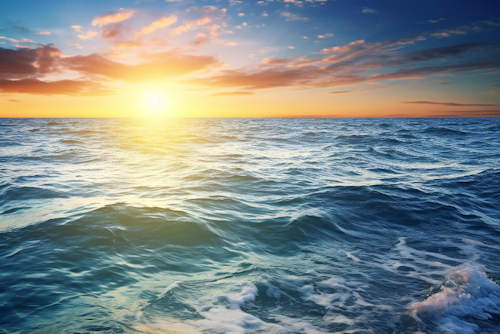As a vessel’s principal driver, a propeller is a mighty component that has significant implications not only on a ship’s performance but also on the environment it navigates through. Our choices at sea reflect upon the delicate marine ecosystem. Among those choices, the selection of the ship’s propeller is one with far-reaching consequences.
Propeller Noise: The Unseen Pollutant
Propellers, as they rotate, generate noise, an often overlooked form of pollution. These sound waves propagate through the water, potentially impacting marine life.
Certain species of marine life, like dolphins and whales, rely heavily on their acute sense of hearing for communication, navigation, and foraging. The noise generated by ship propellers can interfere with these activities, causing stress, disorientation, and changes in behavior.
While all propellers generate some degree of noise, the extent of the sound pollution can be influenced by the propeller’s design. Propellers that are poorly designed or improperly matched to the ship can create excessive cavitation, which leads to more noise pollution.
Collision Risks: An Unfortunate Reality
The risk of ship strikes, resulting in the injury or death of marine animals, is a grim reality in busy shipping lanes. While the ship’s overall design and operational practices play significant roles in these incidents, the propeller itself can be a direct cause of harm to marine creatures.
Fast-rotating, sharp-edged propellers pose a significant risk to slower-moving or less aware marine life. In this aspect, ships with larger, slower-moving propellers tend to pose less of a risk.
The Case for Environmentally-Friendly Propellers
Recognizing these issues, some companies have embarked on developing “green” propeller designs. These aim to reduce harmful impacts on marine ecosystems through innovative features like tip vortex reduction, which minimizes cavitation and subsequent noise pollution.
Some designs also experiment with materials and coatings to reduce the chances of biofouling – the accumulation of aquatic organisms on the propeller’s surface – which can hamper a ship’s performance and introduce non-native species to different ecosystems.
Steering Towards Sustainable Choices
Understanding the environmental implications of our propeller choices is a crucial step towards more sustainable shipping practices. The path to a balanced coexistence between commercial shipping and marine ecosystems may be complex, but it is navigable.
Efforts should be made to choose propellers that minimize environmental impact, considering factors like noise generation, potential for injury to marine life, and biofouling. The maritime industry should also strive for continuous innovation in propeller design and materials, aiming to reduce their ecological footprint.
Our actions at sea echo far and wide beneath the waves. As mariners, we must remember that we share the ocean with a diverse array of life. Each choice we make, each piece of equipment we select, holds a ripple effect that permeates the delicate balance of the marine environment. When we set sail, let us ensure that we leave behind not a trail of disruption, but a legacy of respect and care for the blue world we traverse.
